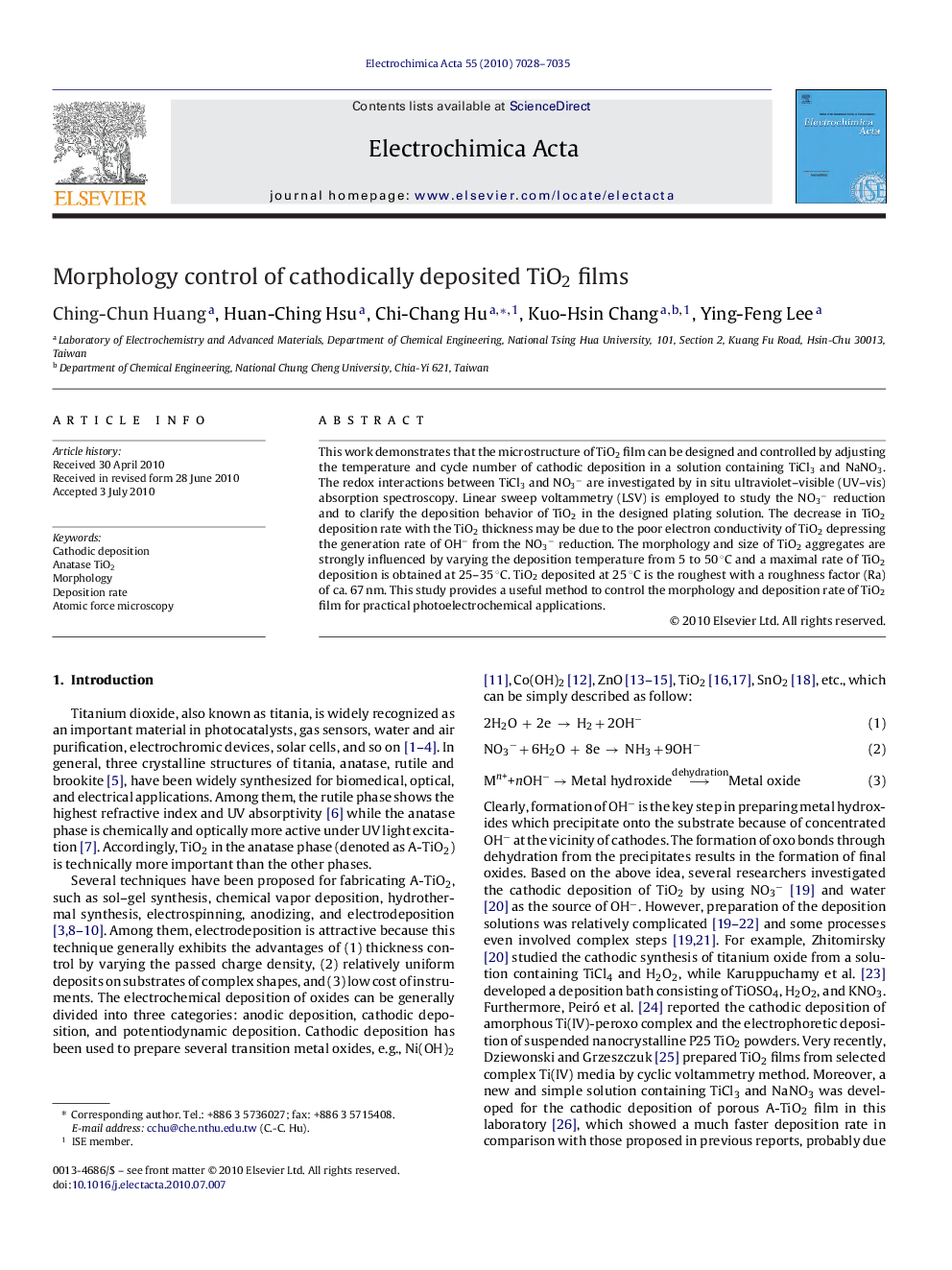| Article ID | Journal | Published Year | Pages | File Type |
|---|---|---|---|---|
| 192012 | Electrochimica Acta | 2010 | 8 Pages |
This work demonstrates that the microstructure of TiO2 film can be designed and controlled by adjusting the temperature and cycle number of cathodic deposition in a solution containing TiCl3 and NaNO3. The redox interactions between TiCl3 and NO3− are investigated by in situ ultraviolet–visible (UV–vis) absorption spectroscopy. Linear sweep voltammetry (LSV) is employed to study the NO3− reduction and to clarify the deposition behavior of TiO2 in the designed plating solution. The decrease in TiO2 deposition rate with the TiO2 thickness may be due to the poor electron conductivity of TiO2 depressing the generation rate of OH− from the NO3− reduction. The morphology and size of TiO2 aggregates are strongly influenced by varying the deposition temperature from 5 to 50 °C and a maximal rate of TiO2 deposition is obtained at 25–35 °C. TiO2 deposited at 25 °C is the roughest with a roughness factor (Ra) of ca. 67 nm. This study provides a useful method to control the morphology and deposition rate of TiO2 film for practical photoelectrochemical applications.
